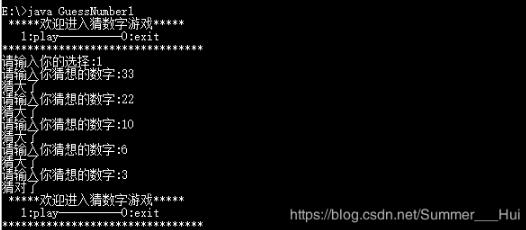PHP5中的this,self和parent關鍵字詳解
PHP5是一具備了大部分面向對象語言的特性的語言,比PHP4有了很多的面向對象的特性,但是有部分概念也比較繞人,所以今天拿出來說說,說的不好,請高手見諒. (閱讀本文,需要了解PHP5的面向對象的知識)
首先我們來明白上面三個關鍵字: this,self,parent,從字面上比較好理解,是指這,自己,父親,呵呵,比較好玩了,我們先建立幾個概念,這三個關鍵字分別是用在什么地方呢?我們初步解釋一下,this是指向當前對象的指針(我們姑且用C里面的指針來看吧),self是指向當前類的指針,parent是指向父類的指針。我們這里頻繁使用指針來描述,是因為沒有更好的語言來表達,呵呵,語文沒學好。 -_-#
這么說還不能很了解,那我們就根據實際的例子結合來講講。
(1) this
1 <?php23 class UserName4 { 5;;//定義屬性;6;;private $name;7 8;;//定義構造函數9;;function __construct( $name )10;;{11; $this->name = $name; //這里已經使用了this指針12;;}13 14;;//析構函數15;;function __destruct(){}1617;;//打印用戶名成員函數18;;function printName()19;;{20; print( $this->name ); //又使用了this指針21;;}22 }2324 //實例化對象25 $nameObject = new UserName( 'heiyeluren' );2627 //執行打印28 $nameObject->printName(); //輸出: heiyeluren29 30 //第二次實例化對象31 $nameObject2 = new UserName( 'PHP5' );32 33 //執行打印34 $nameObject2->printName(); //輸出:PHP535 ?>
我們看,上面的類分別在11行和20行使用了this指針,那么當時this是指向誰呢?其實this是在實例化的時候來確定指向誰,比如第一次實例化對象的時候(25行),那么當時this就是指向$nameObject對象,那么執行18行的打印的時候就把print( $this-><name )變成了print( $nameObject->name ),那么當然就輸出了'heiyeluren'。第二個實例的時候,print( $this->name )變成了print( $nameObject2->name ),于是就輸出了'PHP5'。所以說,this就是指向當前對象實例的指針,不指向任何其他對象或類。
(2)self
首先我們要明確一點,self是指向類本身,也就是self是不指向任何已經實例化的對象,一般self使用來指向類中的靜態變量。
1 <?php23;;class Counter4;;{5 //定義屬性,包括一個靜態變量6 private static $firstCount = 0;7 private $lastCount;89 //構造函數10 function __construct()11 {12;;;$this->lastCount = ++selft::$firstCount; //使用self來調用靜態變量,使用self調用必須使用::(域運算符號)13 }1415 //打印最次數值16 function printLastCount()17 {18;;;print( $this->lastCount );19 } 20;;}2122 //實例化對象23 $countObject = new Counter();2425 $countObject->printLastCount(); //輸出 12627 ?>
我們這里只要注意兩個地方,第6行和第12行。我們在第二行定義了一個靜態變量$firstCount,并且初始值為0,那么在12行的時候調用了這個值得,使用的是self來調用,并且中間使用'::'來連接,就是我們所謂的域運算符,那么這時候我們調用的就是類自己定義的靜態變量$frestCount,我們的靜態變量與下面對象的實例無關,它只是跟類有關,那么我調用類本身的的,那么我們就無法使用this來引用,可以使用self來引用,因為self是指向類本身,與任何對象實例無關。換句話說,假如我們的類里面靜態的成員,我們也必須使用self來調用。
(3)parent
我們知道parent是指向父類的指針,一般我們使用parent來調用父類的構造函數。
1 <?php23 //基類4 class Animal5 {6;;//基類的屬性7;;public $name; //名字89;;//基類的構造函數10;;public function __construct( $name )11;;{12; $this->name = $name;13;;}14 }1516 //派生類17 class Person extends Animal //Person類繼承了Animal類18 {19;;public $personSex; //性別20;;public $personAge; //年齡2122;;//繼承類的構造函數23;;function __construct( $personSex, $personAge )24;;{25; parent::__construct( 'heiyeluren' ); //使用parent調用了父類的構造函數26; $this->personSex = $personSex;27; $this->personAge = $personAge;28;;}2930;;function printPerson()31;;{32; print( $this->name. ' is ' .$this->personSex. ',this year ' .$this->personAge );33;;;}34 }3536 //實例化Person對象37 $personObject = new Person( 'male', '21');3839 //執行打印40 $personObject->printPerson(); //輸出:heiyeluren is male,this year 214142 ?>
我們注意這么幾個細節:成員屬性都是public的,特別是父類的,是為了供繼承類通過this來訪問。我們注意關鍵的地方,第25行:parent::__construct( 'heiyeluren' ),這時候我們就使用parent來調用父類的構造函數進行對父類的初始化,因為父類的成員都是public的,于是我們就能夠在繼承類中直接使用this來調用。
總結:
this是指向對象實例的一個指針,self是對類本身的一個引用,parent是對父類的引用。
基本上我所了解就這么多,肯定有理解錯誤之處,請高手指出!
我的郵箱: heiyeluren@163.com
WriteTime: 2004-11-3 18:30
http://dev.csdn.net/author/heiyeshuwu/702e33d6abaf4be58c06f1b55cf0fc8c.html

 網公網安備
網公網安備